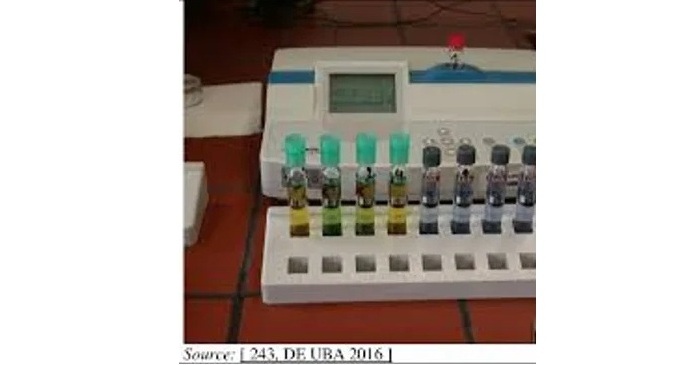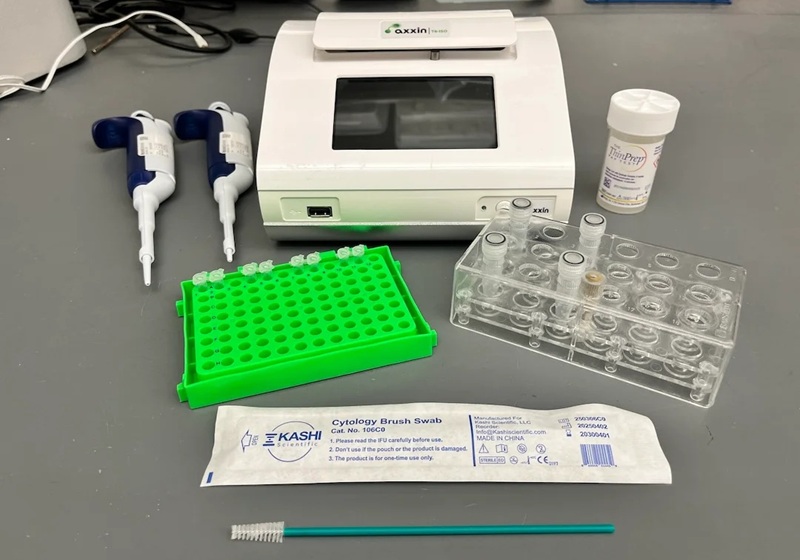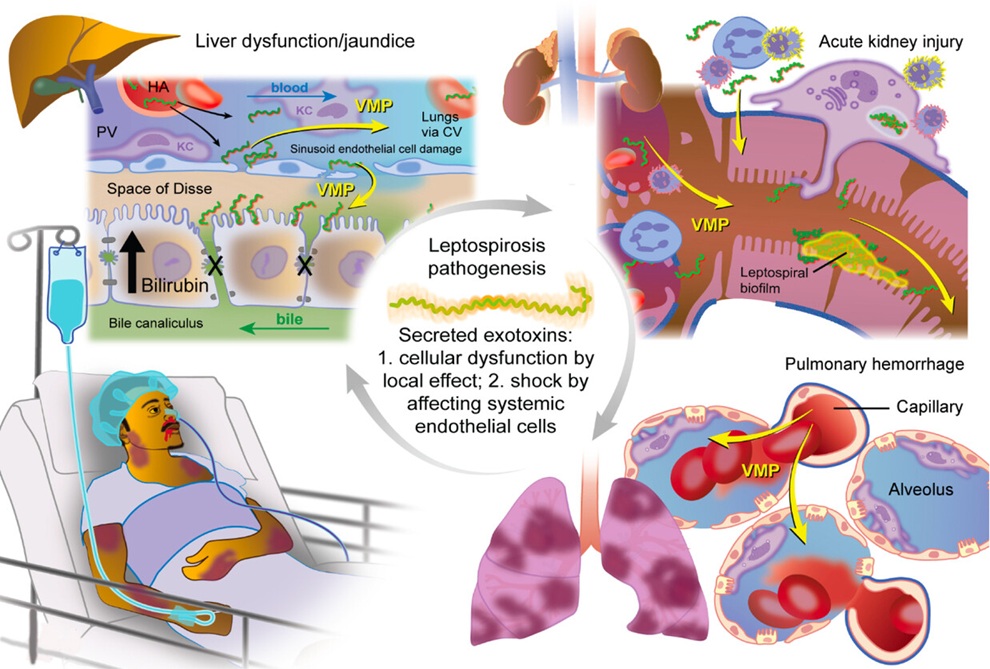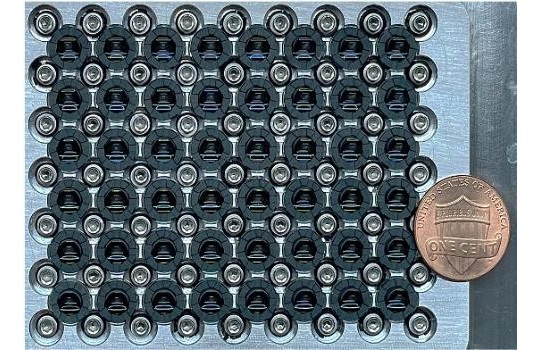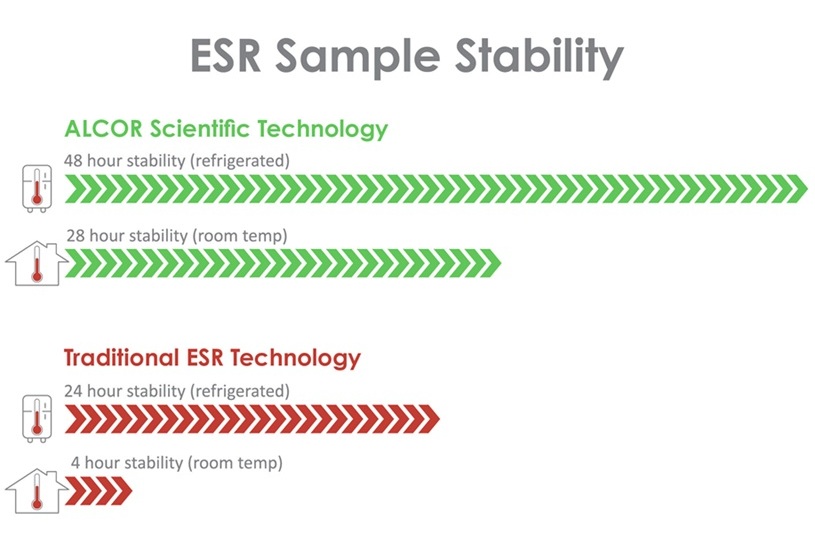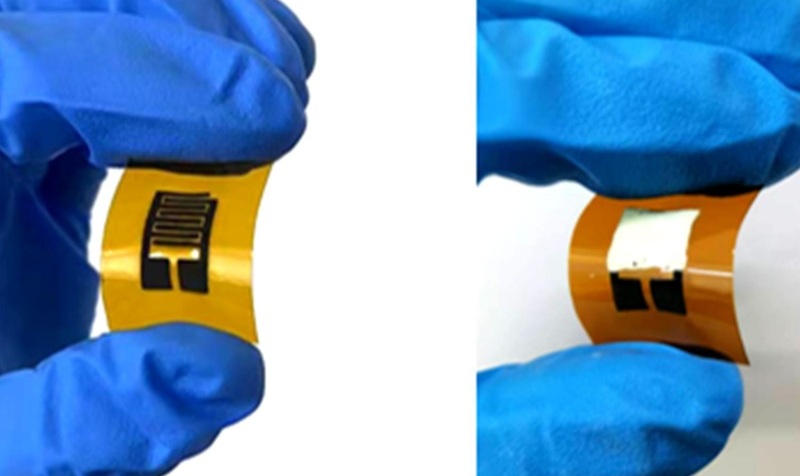Cryopreserved Erythrocytes Processed for Blood Transfusion
|
By LabMedica International staff writers Posted on 10 Apr 2012 |
Cryostorage of red blood cells (RBCs) represents a valid alternative to liquid storage, since units can be preserved safely for at least a decade while conserving cell viability.
Preservation of blood for transfusion purposes has represented a lifesaving advance in clinical practice over many years, but although cryostorage has attracted a great deal of attention clinically, little is known about the biochemistry and physiology of cryostored erythrocyte concentrates.
Specialists at the University of Tuscia (Viterbo, Italy) investigated cryostorage of RBCs through monitoring of cell processing steps, from fresh blood, to glycerolization, thawing, and deglycerolization, followed by washing. Whole blood was collected from 10 healthy donor volunteers into 63 mL of citrate phosphate dextrose (CPD) anticoagulant, and leukodepleted. All glycerolized RBC units were frozen and stored at −80 ± 10 °C in a mechanical freezer for at least 12 months.
The erythrocytes were monitored through repeated assays of standard parameters of mean cell volume (MCV), red cell distribution width-standard deviation (RDW-SD), the mean cell hemoglobin concentration (MCHC), and the hematocrit (Hct). These were determined with a CA 530-Oden hematology analyzer. Scanning electron microscopy was also performed. Other standard biological indicators, such as hemoglobin content, pH values both internal and in the supernatant, lactate levels, osmotic fragility and hemolysis, were also calculated.
Cell processing for cryostorage resulted in increased RBC volumes. Mean cell volume (MCV) increased significantly upon glycerolization, from 89.4 ± 4.5 fL of fresh RBCs to 126.04 ± 2.3 fL of glycerolized RBCs, while it remained constant at 129.6 ± 3.3 fL upon cryostorage even after thawing. Deglycerolization and washing restored lower MCV values 93.7 ± 5.9 fL, though they were still higher than controls. Shape alterations caused an increase in osmotic fragility and permeability to ions. A significant pH drop was observed which could not to be attributed to a higher metabolic rate, since the levels of lactate did not show substantial fluctuation during the cell processing steps tested in this study. The membrane anomalies reported are likely related to the hemolysis observed which preferentially affected the densest and oldest cell sub-populations, as confirmed by means of discontinuous density gradients. The CA 530-Oden hematology analyzer used in the study is manufactured by Medonic (Stockholm, Sweden).
The authors concluded that their results indicate that cryostorage itself in presence of glycerol does not significantly affect RBCs. Most of the alterations observed were related to cell processing and, in particular, to the increase of cytosolic glycerol as a consequence of the glycerolization step. Further studies might profitably investigate replacing glycerol with nonpenetrating cryoprotectants such as polyvinylpyrrolidone or polyethylene glycol, or the less toxic sucrose and trehalose.The study was published online on March 14, 2012, in the journal Blood Cells, Molecules, and Diseases.
Related Links:
University of Tuscia
Medonic
Preservation of blood for transfusion purposes has represented a lifesaving advance in clinical practice over many years, but although cryostorage has attracted a great deal of attention clinically, little is known about the biochemistry and physiology of cryostored erythrocyte concentrates.
Specialists at the University of Tuscia (Viterbo, Italy) investigated cryostorage of RBCs through monitoring of cell processing steps, from fresh blood, to glycerolization, thawing, and deglycerolization, followed by washing. Whole blood was collected from 10 healthy donor volunteers into 63 mL of citrate phosphate dextrose (CPD) anticoagulant, and leukodepleted. All glycerolized RBC units were frozen and stored at −80 ± 10 °C in a mechanical freezer for at least 12 months.
The erythrocytes were monitored through repeated assays of standard parameters of mean cell volume (MCV), red cell distribution width-standard deviation (RDW-SD), the mean cell hemoglobin concentration (MCHC), and the hematocrit (Hct). These were determined with a CA 530-Oden hematology analyzer. Scanning electron microscopy was also performed. Other standard biological indicators, such as hemoglobin content, pH values both internal and in the supernatant, lactate levels, osmotic fragility and hemolysis, were also calculated.
Cell processing for cryostorage resulted in increased RBC volumes. Mean cell volume (MCV) increased significantly upon glycerolization, from 89.4 ± 4.5 fL of fresh RBCs to 126.04 ± 2.3 fL of glycerolized RBCs, while it remained constant at 129.6 ± 3.3 fL upon cryostorage even after thawing. Deglycerolization and washing restored lower MCV values 93.7 ± 5.9 fL, though they were still higher than controls. Shape alterations caused an increase in osmotic fragility and permeability to ions. A significant pH drop was observed which could not to be attributed to a higher metabolic rate, since the levels of lactate did not show substantial fluctuation during the cell processing steps tested in this study. The membrane anomalies reported are likely related to the hemolysis observed which preferentially affected the densest and oldest cell sub-populations, as confirmed by means of discontinuous density gradients. The CA 530-Oden hematology analyzer used in the study is manufactured by Medonic (Stockholm, Sweden).
The authors concluded that their results indicate that cryostorage itself in presence of glycerol does not significantly affect RBCs. Most of the alterations observed were related to cell processing and, in particular, to the increase of cytosolic glycerol as a consequence of the glycerolization step. Further studies might profitably investigate replacing glycerol with nonpenetrating cryoprotectants such as polyvinylpyrrolidone or polyethylene glycol, or the less toxic sucrose and trehalose.The study was published online on March 14, 2012, in the journal Blood Cells, Molecules, and Diseases.
Related Links:
University of Tuscia
Medonic
Latest Hematology News
- Viscoelastic Testing Could Improve Treatment of Maternal Hemorrhage
- Pioneering Model Measures Radiation Exposure in Blood for Precise Cancer Treatments
- Platelets Could Improve Early and Minimally Invasive Detection of Cancer
- Portable and Disposable Device Obtains Platelet-Rich Plasma Without Complex Equipment
- Disposable Cartridge-Based Test Delivers Rapid and Accurate CBC Results
- First Point-of-Care Heparin Monitoring Test Provides Results in Under 15 Minutes

- New Scoring System Predicts Risk of Developing Cancer from Common Blood Disorder
- Non-Invasive Prenatal Test for Fetal RhD Status Demonstrates 100% Accuracy
- WBC Count Could Predict Severity of COVID-19 Symptoms
- New Platelet Counting Technology to Help Labs Prevent Diagnosis Errors
- Streamlined Approach to Testing for Heparin-Induced Thrombocytopenia Improves Diagnostic Accuracy
- POC Hemostasis System Could Help Prevent Maternal Deaths
- New Test Assesses Oxygen Delivering Ability of Red Blood Cells by Measuring Their Shape
- Personalized CBC Testing Could Help Diagnose Early-Stage Diseases in Healthy Individuals
- Non-Invasive Test Solution Determines Fetal RhD Status from Maternal Plasma
- First-Of-Its-Kind Smartphone Technology Noninvasively Measures Blood Hemoglobin Levels at POC

Channels
Clinical Chemistry
view channel
VOCs Show Promise for Early Multi-Cancer Detection
Early cancer detection is critical to improving survival rates, but most current screening methods focus on individual cancer types and often involve invasive procedures. This makes it difficult to identify... Read more
Portable Raman Spectroscopy Offers Cost-Effective Kidney Disease Diagnosis at POC
Kidney disease is typically diagnosed through blood or urine tests, often when patients present with symptoms such as blood in urine, shortness of breath, or weight loss. While these tests are common,... Read moreMolecular Diagnostics
view channelSimple Blood Test Identifies Metabolic Signature of Healthier Aging
Exercise has long been known to protect mobility and reduce the risk of chronic disease, but the molecular processes that translate activity into healthier aging have remained unclear. Researchers have... Read more
Rapid Blood Tests Differentiate Schizophrenia and Bipolar Disorder
Schizophrenia (SZ) and bipolar disorder (BD) affect millions of Americans but are often difficult to distinguish due to overlapping symptoms. Current diagnostic methods rely heavily on subjective assessments... Read moreImmunology
view channel
Novel Tool Predicts Most Effective Multiple Sclerosis Medication for Patients
Multiple sclerosis (MS) is a chronic autoimmune and degenerative neurological disease that affects the central nervous system, leading to motor, cognitive, and mental impairments. Symptoms can include... Read more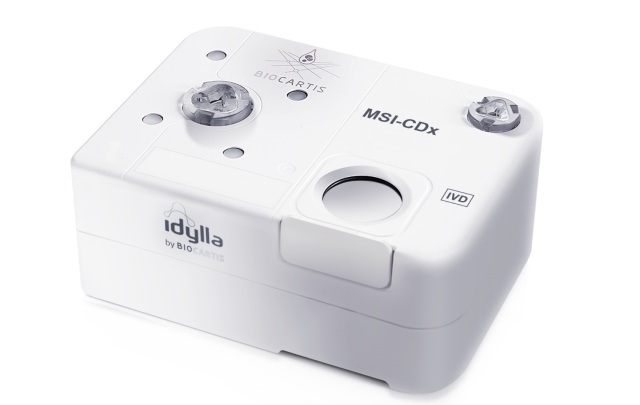
Companion Diagnostic Test for CRC Patients Identifies Eligible Treatment Population
Colorectal cancer remains one of the leading causes of cancer-related deaths worldwide, and identifying which patients will benefit most from targeted immunotherapies is critical. Existing diagnostic methods... Read more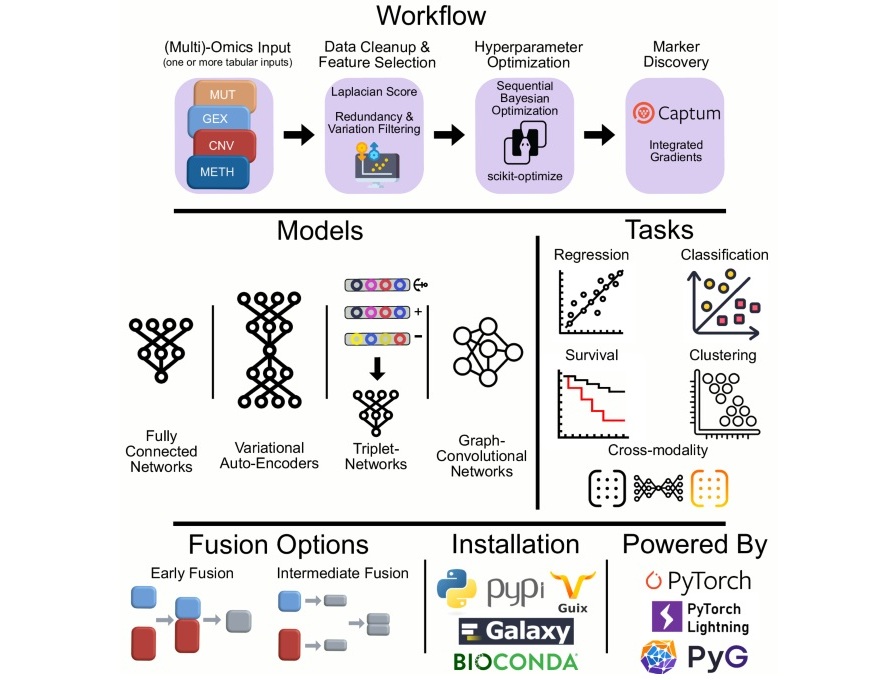
Novel Tool Uses Deep Learning for Precision Cancer Therapy
Nearly 50 new cancer therapies are approved each year, but selecting the right one for patients with highly individual tumor characteristics remains a major challenge. Physicians struggle to navigate the... Read more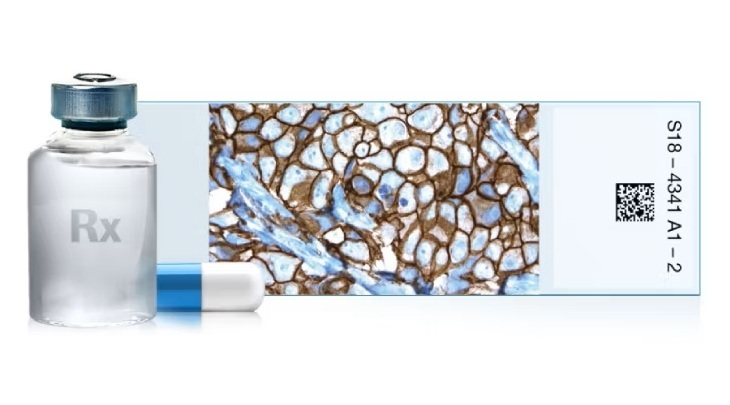
Companion Diagnostic Test Identifies HER2-Ultralow Breast Cancer and Biliary Tract Cancer Patients
Breast cancer is the most common cancer in Europe, with more than 564,000 new cases and 145,000 deaths annually. Metastatic breast cancer is rising in younger populations and remains the leading cause... Read moreMicrobiology
view channel
Fast Noninvasive Bedside Test Uses Sugar Fingerprint to Detect Fungal Infections
Candida bloodstream infections are a growing global health threat, causing an estimated 6 million cases and 3.8 million deaths annually. Hospitals are particularly vulnerable, as weakened patients after... Read more
Rapid Sepsis Diagnostic Device to Enable Personalized Critical Care for ICU Patients
Sepsis is a life-threatening condition that occurs when the body’s response to infection spirals out of control, damaging organs and leading to critical illness. Patients often arrive at intensive care... Read morePathology
view channel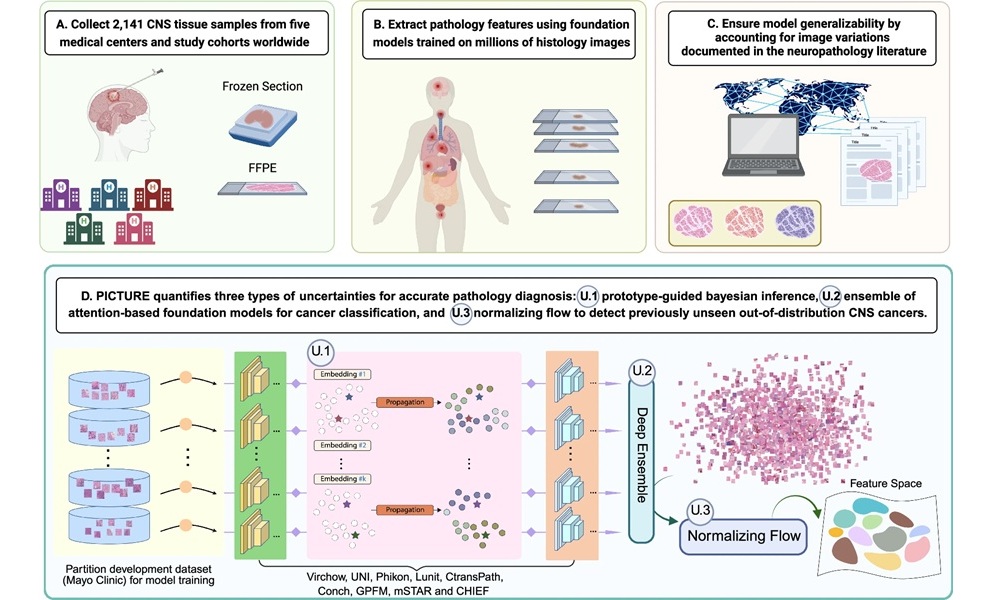
AI Tool Helps Surgeons Distinguish Aggressive Glioblastoma from Other Brain Cancers in Real-Time
Accurately distinguishing between brain tumors during surgery is one of the toughest diagnostic challenges in neuro-oncology. Glioblastoma, the most common and aggressive brain tumor, often appears similar... Read more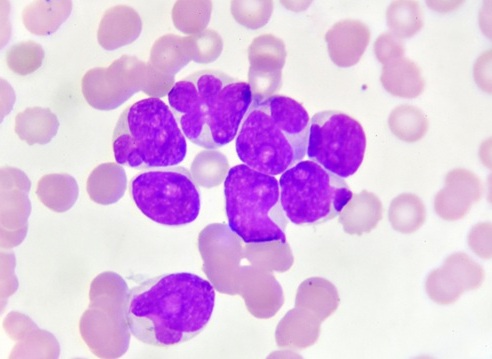
New Tool Could Revolutionize Acute Leukemia Diagnosis
Acute leukemia is a highly aggressive blood cancer that requires rapid and accurate diagnosis to guide treatment decisions. Current diagnostic methods, which rely on molecular and cytogenetic testing,... Read moreTechnology
view channel
Hybrid Pipette Combines Manual Control with Fast Electronic Aliquoting
Manual pipettes offer the control needed for delicate tasks such as mixing or supernatant removal, but typically fall short in repetitive workflows like aliquoting. Electronic pipettes solve this problem... Read more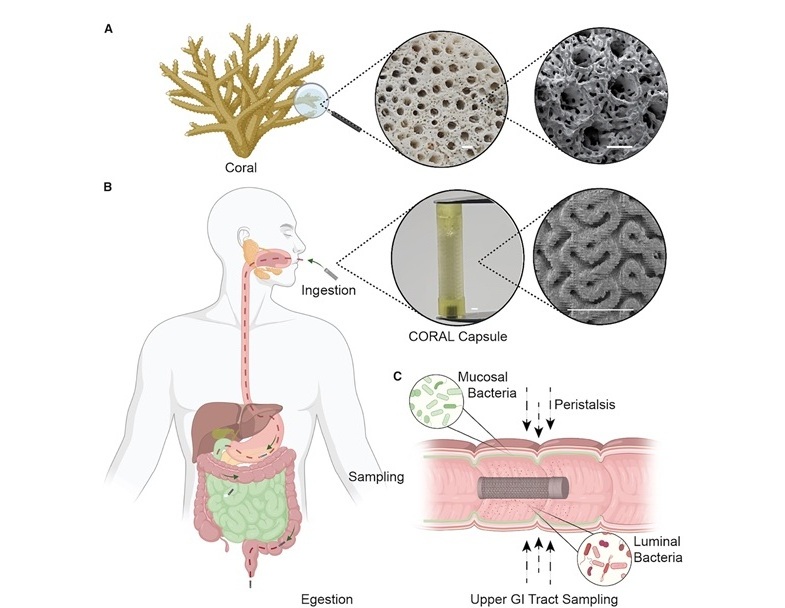
Coral-Inspired Capsule Samples Hidden Bacteria from Small Intestine
The gut microbiome has been linked to conditions ranging from immune disorders to mental health, yet conventional stool tests often fail to capture bacterial populations in the small intestine.... Read more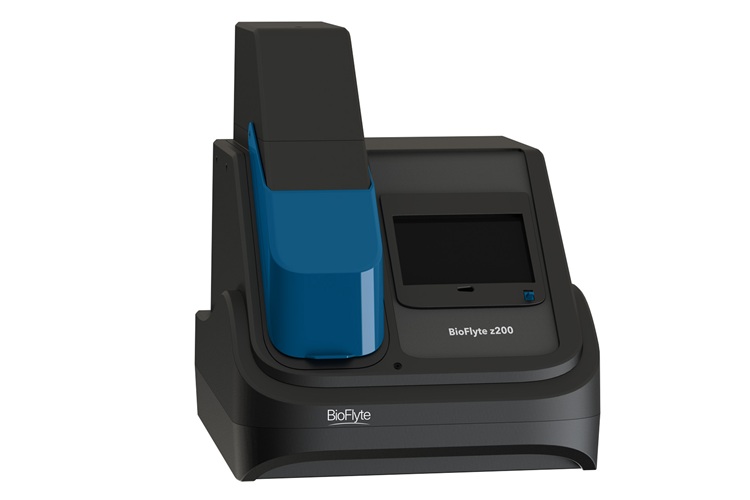
Rapid Diagnostic Technology Utilizes Breath Samples to Detect Lower Respiratory Tract Infections
Respiratory tract infections (LRTIs) are leading causes of illness and death worldwide, particularly among vulnerable populations such as the elderly, young children, and those with compromised immune systems.... Read moreIndustry
view channelELITech and Hitachi High-Tech to Develop Automated PCR Testing System for Infectious Diseases
Molecular testing has become central to diagnosing and monitoring infectious diseases by analyzing genetic information. The use of PCR during the COVID-19 pandemic showed its value, but traditional systems... Read more